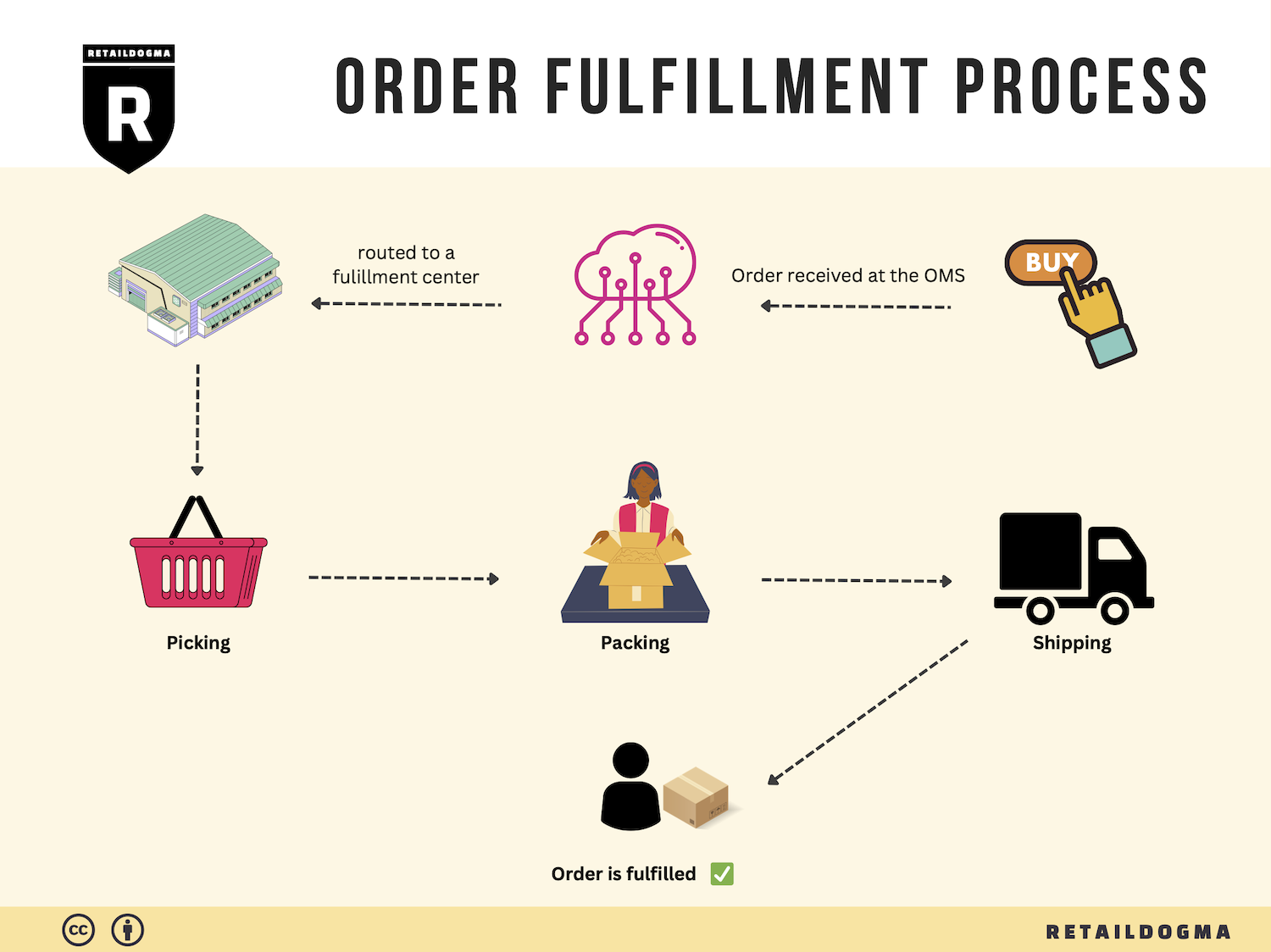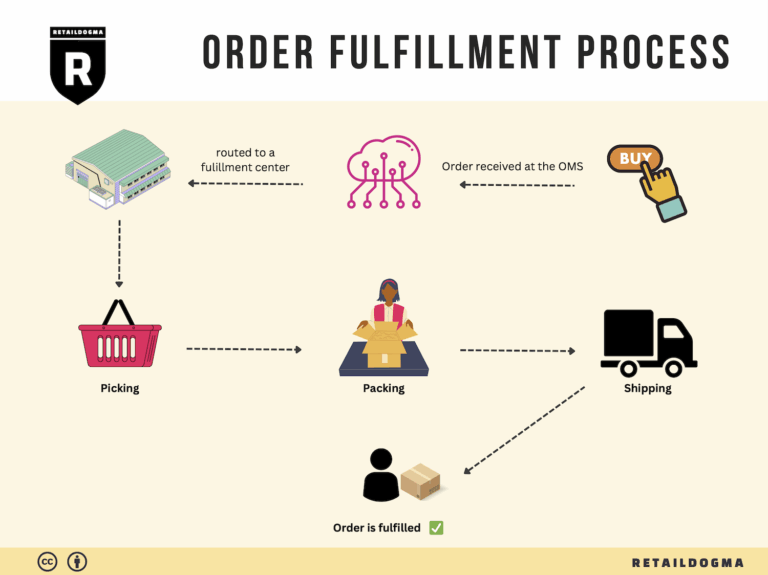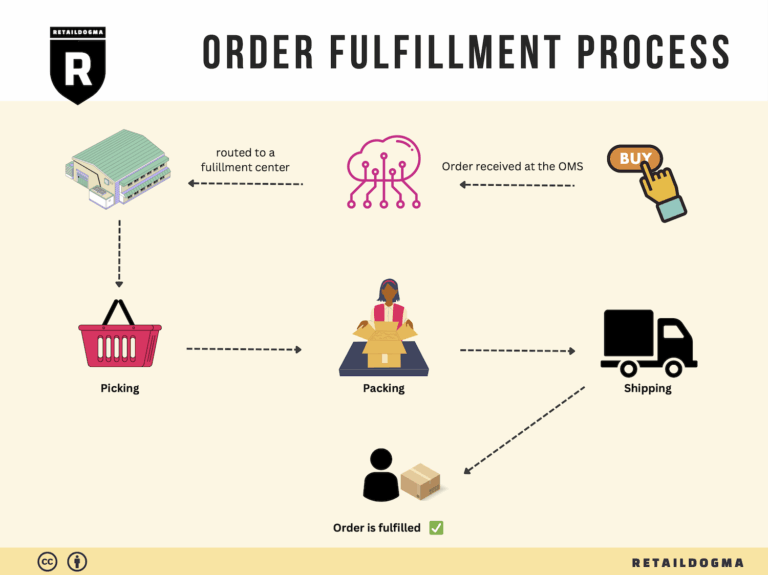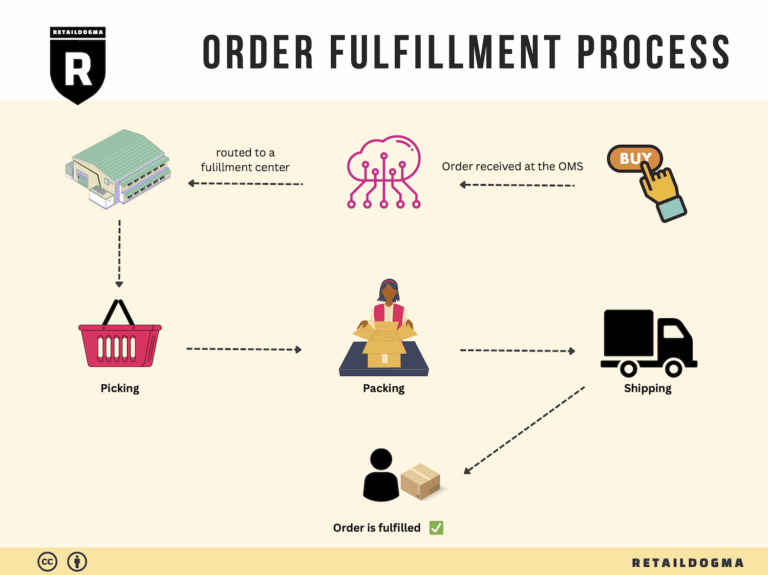Ecommerce Fulfillment Services: The Ultimate Guide (2025)
What is E-commerce Fulfillment? An Introduction for Growing Businesses
Understanding the Fulfillment Process: A Key to E-commerce Success
As an e-commerce business owner, the excitement of growing your online store can quickly turn into overwhelm when it comes to packing and shipping orders. Managing the logistics of getting products to your customers is a critical component of your business that can either enhance customer satisfaction or lead to frustration and lost sales. This is where the concept of fulfillment comes into play. Simply put, fulfillment is the process of receiving, processing, and delivering orders to customers. It encompasses everything from inventory management to shipping logistics, and it can be a daunting task for growing businesses.
In this guide, we will explore the various models of e-commerce fulfillment, including Third-Party Logistics (3PL) and Fulfillment by Amazon (FBA). These models offer different benefits and challenges, allowing you to choose the best fit for your business needs. By understanding these options, you can streamline your operations and focus on scaling your sales rather than getting bogged down by logistics.
We will delve into the core services that fulfillment partners typically offer, such as inventory storage, order processing, packing, and shipping. Each of these elements plays a vital role in ensuring that your products reach your customers in a timely and efficient manner. Additionally, we will discuss how to choose the right fulfillment partner for your business. Factors such as location, technology integration, customer service, and scalability will be key considerations to ensure that your chosen partner aligns with your growth strategy.
Pricing is another essential topic we will cover. Understanding the cost structures associated with different fulfillment options can help you make informed decisions that affect your bottom line. By knowing what to expect in terms of fees and charges, you can better plan your budget and avoid unexpected expenses.
Ultimately, the goal of this guide is to empower you to make smart decisions about your logistics. With the right fulfillment strategy in place, you can enhance your operational efficiency, improve customer satisfaction, and ultimately drive growth for your e-commerce business. Let’s dive into the world of e-commerce fulfillment and discover how to optimize your logistics for success.
What You’ll Learn In This Guide
- What is E-commerce Fulfillment? An Introduction for Growing Businesses
- The Order Fulfillment Process: From ‘Buy’ Button to Customer’s Door
- Comparing Fulfillment Models: In-House vs. 3PL vs. Dropshipping
- A Deep Dive into Amazon FBA: Pros, Cons, and Who It’s For
- Core Services Offered by Fulfillment Centers
- How to Choose a Fulfillment Partner: A 6-Point Checklist
- Understanding Fulfillment Pricing: A Breakdown of Common Fees
- Frequently Asked Questions (FAQs) about Fulfillment
- Conclusion: Is Outsourcing Fulfillment the Right Move for Your Business?
- Important Disclaimer
The Order Fulfillment Process: From ‘Buy’ Button to Customer’s Door
1. Receiving Inventory
The order fulfillment process begins with receiving inventory at the fulfillment center. This step involves the acceptance of products from suppliers or manufacturers. Upon arrival, the inventory is checked against purchase orders to ensure accuracy in quantity and quality. Each product is assigned a Stock Keeping Unit (SKU), a unique identifier that helps track inventory levels and locations within the warehouse.
This step is crucial because it establishes the foundation for an efficient fulfillment process. Accurate receiving ensures that the right products are available when orders come in, reducing the likelihood of stockouts or overstock situations. Moreover, proper documentation during receiving helps maintain supplier accountability and streamlines future returns or exchanges.
2. Warehouse Storage
Once inventory is received, it is organized in the warehouse storage area. Products are strategically placed based on factors such as size, weight, demand, and storage requirements. This organization often employs a method known as zone picking, where specific areas of the warehouse are designated for certain types of products.
Effective warehouse storage is vital for maximizing space and optimizing retrieval times. A well-organized warehouse allows for quicker access to products, reducing the time it takes to fulfill orders. Additionally, utilizing technology such as barcode scanners and inventory management systems can enhance accuracy in tracking product locations, leading to improved operational efficiency.
3. Order Picking
The next phase is order picking, where items are gathered to fulfill customer orders. This process can be executed using various methods, including pick lists, which provide warehouse associates with a detailed list of items to collect for each order. Some businesses also use automated picking systems, such as robots or conveyor belts, to streamline this process.
Order picking is a critical step because it directly impacts order accuracy and customer satisfaction. Errors in picking can lead to shipping the wrong items, which can damage customer trust and result in costly returns. Implementing strategies like batch picking (picking multiple orders simultaneously) can increase efficiency and reduce labor costs.
4. Order Packing
After picking, the next step is order packing, where the selected items are carefully packaged for shipment. During this stage, products are inspected for quality and packaged using appropriate materials to prevent damage during transit. Shipping labels are generated, which include essential details such as destination, tracking numbers, and barcodes.
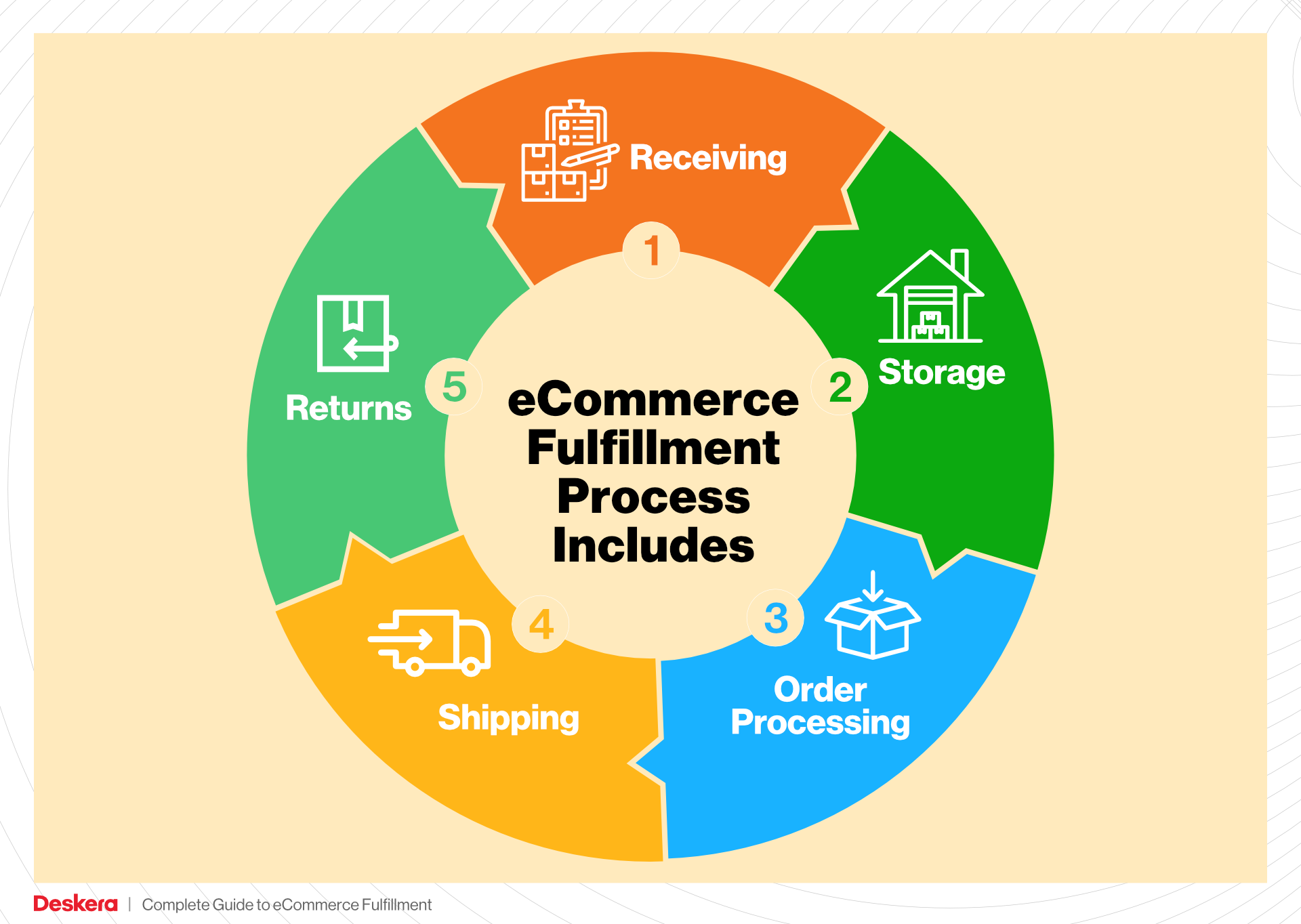
Packing is a significant step in the fulfillment process as it ensures that products arrive safely and in good condition. Poor packing can lead to damaged goods, resulting in customer dissatisfaction and increased return rates. Additionally, well-designed packaging can enhance the brand image and provide an opportunity for upselling or cross-selling through inserts or promotions included in the package.
5. Shipping & Delivery
The final step in the order fulfillment process is shipping and delivery. Once orders are packed, they are handed off to carriers for transportation to the customer’s designated address. Businesses often partner with multiple shipping providers to offer various delivery options, including standard, expedited, and same-day shipping.
This step is crucial as it determines how quickly customers receive their orders, which can significantly influence their overall satisfaction and likelihood of repeat purchases. Tracking systems allow both the business and the customer to monitor shipment progress, enhancing transparency and trust. Effective shipping strategies, including optimizing routes and managing carrier relationships, can lead to reduced costs and improved delivery times.
In summary, the order fulfillment process from receiving inventory to shipping and delivery is a multi-faceted operation that requires careful planning and execution. Each step is interconnected and plays a vital role in ensuring customer satisfaction and operational efficiency. By focusing on these steps, e-commerce businesses can optimize their fulfillment processes, leading to enhanced scalability and growth.
Comparing Fulfillment Models: In-House vs. 3PL vs. Dropshipping
Fulfillment Model Comparison
| Model | Who Handles Inventory | Best For (Business Stage) | Key Advantage | Key Disadvantage |
|---|---|---|---|---|
| In-House Fulfillment | Business itself | Established businesses | Greater control over inventory and processes | High overhead costs and operational complexity |
| Third-Party Logistics (3PL) | External logistics provider | Growing to scaling businesses | Scalable and flexible logistics solutions | Less control over inventory management |
| Dropshipping | Supplier/Manufacturer | Startups and small businesses | Low upfront investment and risk | Lower profit margins and less control over shipping |
In-House Fulfillment
In-house fulfillment refers to the practice of managing the entire inventory and shipping process within the business itself. This model is typically adopted by established businesses that have the resources and demand to justify the operational complexities involved. By handling inventory directly, businesses can exert significant control over their logistics processes, from warehousing to order fulfillment. This can lead to enhanced customer service, as companies can quickly respond to changes in inventory levels or shipping requirements. However, the key disadvantage is the high overhead costs associated with maintaining warehouse space, staffing, and technology needed for efficient operations. As businesses scale, they may find the operational complexity challenging to manage, especially if they experience rapid growth or fluctuations in demand.
Third-Party Logistics (3PL)
Third-party logistics (3PL) involves outsourcing logistics and fulfillment operations to an external provider. This model is particularly advantageous for growing businesses that are scaling their operations but may not have the resources to manage logistics internally. 3PL providers offer a range of services, including warehousing, inventory management, and shipping, which can be customized based on the business’s needs. This flexibility allows businesses to scale their logistics operations without the burden of significant upfront investments in infrastructure. However, the trade-off is that businesses relinquish some control over their inventory management and fulfillment processes. This can lead to challenges in quality control and customer service, as businesses depend on the 3PL provider to meet their standards and timelines.
Dropshipping
Dropshipping is a fulfillment model where the retailer does not hold inventory but instead transfers customer orders directly to a supplier or manufacturer, who then ships the product to the customer. This model is ideal for startups and small businesses that want to minimize upfront investment and risk. Since there is no need to purchase inventory upfront or manage warehouse space, dropshipping allows entrepreneurs to focus on marketing and customer acquisition rather than logistics. However, dropshipping comes with its own set of challenges. Profit margins are often lower compared to other fulfillment models, as retailers have to pay the supplier for each order. Furthermore, businesses have limited control over shipping times and product quality, which can impact customer satisfaction and brand reputation. As a business scales, it may find that relying solely on dropshipping could hinder its growth potential due to these limitations.
Conclusion
When selecting a fulfillment model, e-commerce businesses must carefully consider their current operational capabilities, growth ambitions, and resource availability. Each model has distinct advantages and disadvantages, and the choice may significantly impact logistics efficiency, customer satisfaction, and overall business success. Businesses should evaluate their specific needs, the nature of their products, and their long-term goals to determine the most suitable fulfillment strategy.
A Deep Dive into Amazon FBA: Pros, Cons, and Who It’s For
Understanding Fulfillment by Amazon (FBA)
Fulfillment by Amazon (FBA) is a service that allows e-commerce sellers to leverage Amazon’s extensive logistics network to store, pack, and ship their products. By using FBA, sellers can focus on their core business activities while Amazon handles the complexities of order fulfillment. This service is particularly attractive for businesses looking to scale quickly and efficiently.
How FBA Works
-
Product Storage: Sellers send their inventory to Amazon’s fulfillment centers, where products are stored until sold. For instance, the Amazon Fulfillment Center DB09 in Middleborough, MA, is one of the many centers that house a vast array of products.
-
Order Processing: When a customer places an order for a product fulfilled by FBA, Amazon takes over. They pick, pack, and ship the product directly to the customer. This process is streamlined by Amazon’s sophisticated technology and logistics systems.
-
Customer Service: Amazon also handles customer service for FBA orders, including returns and refunds. This further alleviates the seller’s burden, allowing them to maintain focus on product development and marketing.
-
Prime Eligibility: Products fulfilled through FBA are automatically eligible for Amazon Prime, which can significantly increase sales due to the appeal of free two-day shipping for Prime members.
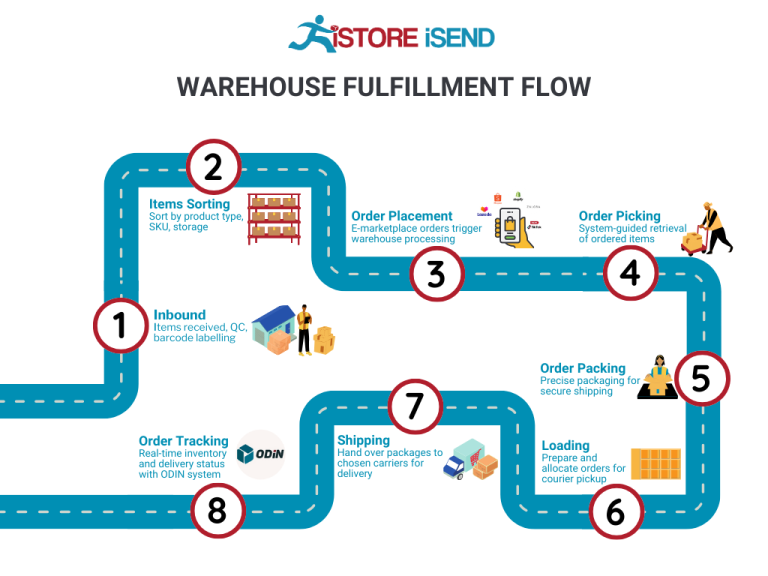
Pros of Using FBA
-
Prime Eligibility: One of the most significant advantages of FBA is the automatic eligibility for Amazon Prime. This not only increases the visibility of your products but also attracts a loyal customer base that values fast shipping.
-
Enhanced Customer Trust: By utilizing Amazon’s trusted brand, sellers can benefit from the credibility that comes with it. Customers often prefer purchasing items that are fulfilled by Amazon due to the assurance of reliable service and easy returns.
-
Multi-Channel Fulfillment: FBA allows sellers to fulfill orders from other sales channels, such as their own e-commerce websites or platforms like eBay. This means that sellers can centralize their inventory and streamline their shipping processes.
-
Scalability: As your business grows, FBA can easily accommodate increased order volumes without the need for additional investments in warehousing or logistics. This scalability is particularly beneficial for seasonal businesses or those experiencing rapid growth.
-
Time Efficiency: With Amazon managing storage, packing, and shipping, sellers can save time and focus on other critical areas of their business, such as marketing and product development.
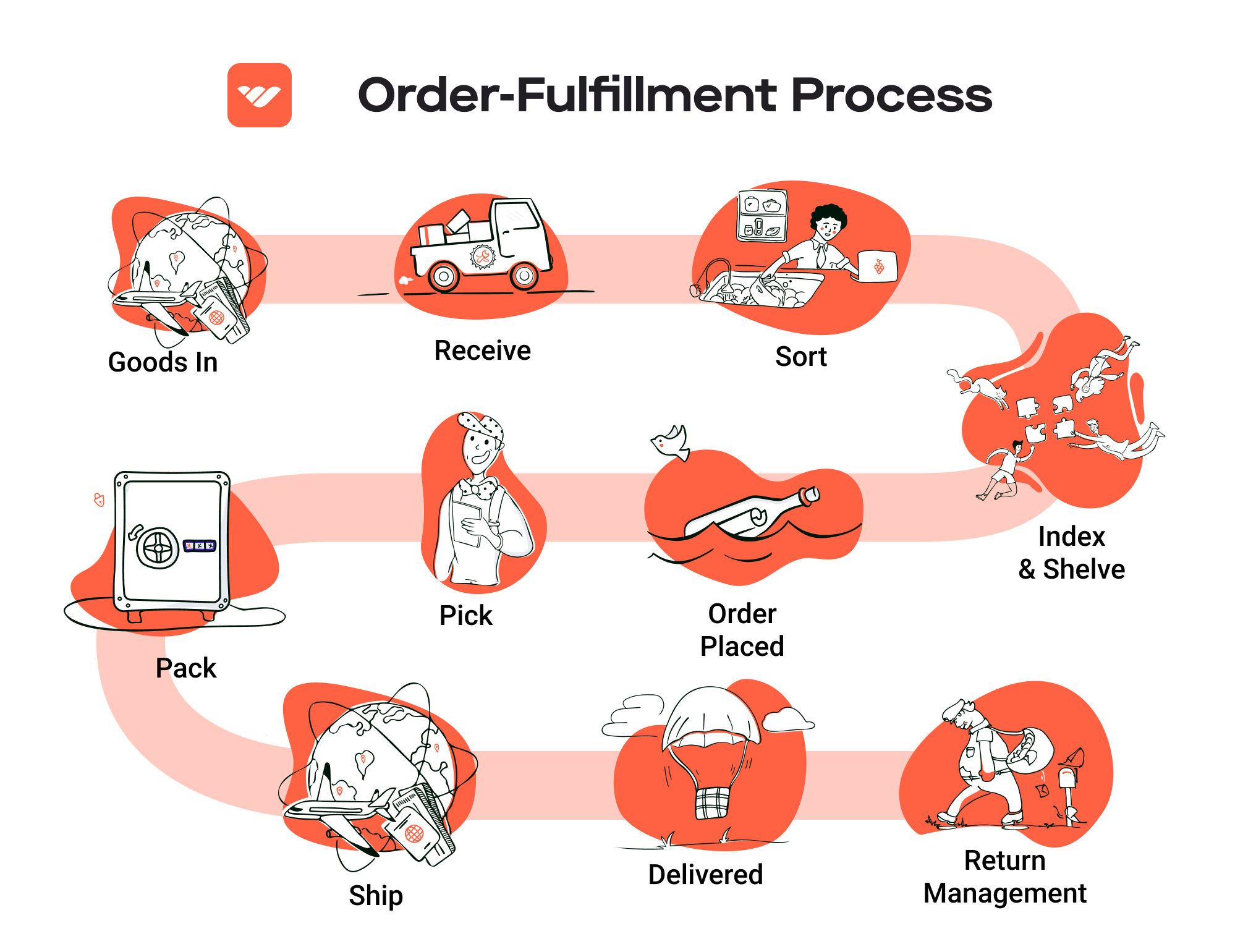
Cons of Using FBA
-
High Fees: While FBA provides many conveniences, it comes at a cost. Sellers must pay storage fees for their inventory, as well as fulfillment fees per unit sold. These costs can add up quickly, especially for sellers with lower margins.
-
Strict Inventory Management: Amazon has strict inventory management policies, which can be challenging for sellers. For instance, if inventory levels are too high, sellers may incur long-term storage fees. Conversely, stockouts can lead to lost sales and diminished rankings in search results.
-
Commingling Risks: FBA operates on a commingling basis, meaning that products from different sellers can be stored together. This can pose a risk if a customer receives a defective product or if another seller’s product is mixed in with yours, potentially impacting your seller rating.
-
Limited Control Over Shipping: While Amazon handles shipping, sellers have limited control over the process. This can be problematic if there are shipping delays or issues with packaging that may affect the customer experience.
Who is FBA Best For?
FBA is particularly well-suited for:
-
Small to Medium-Sized Businesses: Entrepreneurs and small businesses looking to scale quickly can benefit from FBA’s extensive logistics network without needing to invest heavily in warehousing and staffing.
-
Seasonal Sellers: Businesses that experience fluctuations in demand, such as during holiday seasons, can utilize FBA to manage inventory without the risks of long-term storage.
-
Brands Seeking Visibility: Sellers aiming to enhance their product visibility and reach a broader audience will find value in FBA’s Prime eligibility and Amazon’s extensive customer base.
-
Multi-Channel Sellers: Businesses that sell across multiple platforms can streamline their operations with FBA, as it allows for efficient inventory management and fulfillment for orders beyond just Amazon.
In conclusion, while Fulfillment by Amazon offers numerous advantages for e-commerce businesses, it is essential to weigh these against the potential drawbacks. Understanding your business model, sales volume, and customer expectations will help determine if FBA is the right fit for your operations.
Core Services Offered by Fulfillment Centers
Inventory Management & Warehousing
Inventory management and warehousing are foundational services offered by fulfillment centers that allow e-commerce businesses to efficiently store and organize their products. These centers utilize advanced technology and systems to track inventory levels, manage stock locations, and forecast demand.
The benefits of effective inventory management are multifaceted. First, it reduces the risk of overstocking or stockouts, ensuring that products are available when customers want them. This capability is crucial for maintaining customer satisfaction and loyalty. Additionally, accurate inventory tracking helps businesses minimize storage costs by optimizing warehouse space and reducing the need for excess inventory. By leveraging data analytics, fulfillment centers can provide insights into sales trends and inventory turnover, enabling e-commerce businesses to make informed decisions about purchasing and stocking.
Moreover, the centralized warehousing model allows businesses to consolidate their inventory in strategic locations, reducing shipping times and costs. This geographical advantage is particularly beneficial for those looking to expand their market reach without the overhead of managing multiple storage facilities.
Pick and Pack Services
Pick and pack services are at the heart of fulfillment operations. This process involves selecting items from the warehouse based on customer orders and packing them for shipment. Fulfillment centers employ automated systems and trained staff to ensure that orders are picked accurately and efficiently, minimizing errors and delays.
The primary benefit of pick and pack services is the speed at which orders can be processed. In today’s fast-paced e-commerce environment, customers expect quick delivery times. By utilizing a fulfillment center’s pick and pack services, businesses can significantly reduce their order processing times, leading to faster shipping and improved customer satisfaction.
Additionally, these services are scalable, allowing businesses to handle fluctuations in order volume, such as during peak seasons or promotional events, without the need to hire temporary staff or invest in additional infrastructure. This flexibility is essential for maintaining operational efficiency and managing costs effectively.
Kitting and Assembly
Kitting and assembly services involve grouping multiple products together into a single package or preparing items for sale. This process may include assembling components, creating gift sets, or bundling items for promotional offers. Fulfillment centers are equipped to handle these complex tasks, which often require specific expertise and resources.
The key benefit of kitting and assembly is that it allows e-commerce businesses to offer unique product combinations that can enhance customer appeal. By providing customers with thoughtfully packaged products, businesses can differentiate themselves in a competitive market.
Moreover, kitting can simplify the order fulfillment process. When items are pre-assembled, it reduces the time needed for picking and packing individual items, leading to faster order processing. This efficiency can be a game-changer for businesses looking to improve their operational workflows and meet customer demands more effectively.
Kitting also supports better inventory management. By consolidating related products, businesses can streamline their inventory tracking and reduce the complexity of managing multiple SKUs. This can lead to better forecasting and more strategic purchasing decisions.
Returns Management (Reverse Logistics)
Returns management, or reverse logistics, is a critical service provided by fulfillment centers that enables businesses to handle product returns efficiently. This process involves managing the return of goods from customers back to the warehouse, inspecting them, and determining their disposition—whether they will be restocked, repaired, or discarded.
The benefits of effective returns management are significant. First, it enhances customer satisfaction by providing a seamless and hassle-free return experience. In an era where consumers are increasingly concerned about return policies, offering an easy return process can be a decisive factor in their purchasing decisions.
Additionally, a well-managed returns process can provide valuable insights into product performance and customer preferences. By analyzing return data, businesses can identify trends, such as common reasons for returns, which can inform product development and inventory decisions.
Moreover, efficient returns management helps minimize losses associated with returned goods. Fulfillment centers can quickly restock items that are in good condition, reducing the time they spend out of inventory and maximizing their potential for resale. This not only protects the bottom line but also contributes to a more sustainable business model by minimizing waste.
In conclusion, leveraging the core services offered by fulfillment centers—inventory management, pick and pack, kitting, and returns management—can significantly enhance an e-commerce business’s operational efficiency and customer satisfaction. By partnering with a fulfillment center, businesses can scale effectively, streamline their logistics, and focus on growth while ensuring that their customers receive the best possible service.
How to Choose a Fulfillment Partner: A 6-Point Checklist
Location & Warehouse Network
Importance:
The geographical location of your fulfillment partner’s warehouses plays a critical role in shipping efficiency and costs. A partner with strategically located warehouses can reduce transit times and shipping expenses, enhancing customer satisfaction.
Questions to Ask:
1. Where are your warehouses located, and how do they align with our customer base?
2. Do you have a network of warehouses that can cover multiple regions effectively?
3. How do you handle shipping to international destinations, if applicable?
Technology & Integrations
Importance:
In today’s e-commerce landscape, technology is a cornerstone of effective fulfillment. Your partner should offer robust technology solutions that integrate seamlessly with your existing systems, ensuring a smooth flow of information.
Questions to Ask:
1. What technology platforms do you use for inventory management and order processing?
2. Can your system integrate with our e-commerce platform and ERP software?
3. Do you provide real-time tracking capabilities for orders and inventory?
Specializations (e.g., Cold Storage, Oversized Items)
Importance:
Different businesses have unique needs, such as handling perishables or oversized items. Choosing a fulfillment partner with the right specializations can significantly impact your operational efficiency.
Questions to Ask:
1. Do you have facilities equipped for specialized needs like cold storage or hazardous materials?
2. What experience do you have in handling items similar to our product range?
3. Can you accommodate unique packaging or handling requirements we may have?
Scalability & Capacity
Importance:
As your business grows, your fulfillment partner must be able to scale operations accordingly. A partner with the capacity to handle fluctuations in order volume will help you avoid delays and operational bottlenecks.
Questions to Ask:
1. How do you manage peak seasons and unexpected surges in order volume?
2. What is your current capacity, and how do you plan to expand in the future?
3. Can you provide examples of how you’ve scaled operations for other clients?
Pricing and Contracts
Importance:
Understanding the pricing structure and contract terms is essential to ensure that your fulfillment costs remain manageable as your business grows. Transparent pricing will help you budget accurately and avoid hidden fees.
Questions to Ask:
1. What is your pricing model (e.g., per order, per item, flat fee)?
2. Are there any additional fees for services such as storage, returns, or packaging?
3. What are the contract terms, and is there flexibility for changes in our business needs?
Customer Support & Reviews
Importance:
Reliable customer support can make or break your relationship with a fulfillment partner. A partner that values communication and support can help you navigate challenges swiftly, ensuring minimal disruption to your operations.
Questions to Ask:
1. What customer support options do you offer (e.g., phone, email, chat)?
2. How do you handle issues or discrepancies in order fulfillment?
3. Can you provide references or reviews from current or past clients?
Conclusion
Choosing the right fulfillment partner is a vital decision that can significantly influence your business’s success. By using this checklist, you can ensure that you cover all essential aspects and make an informed choice that aligns with your operational needs and growth ambitions. As you evaluate potential partners, keep these points in mind to build a strong foundation for your logistics strategy.
Understanding Fulfillment Pricing: A Breakdown of Common Fees
Initial Setup Fees
When partnering with a fulfillment center like Amazon’s DB09, businesses often encounter initial setup fees. These fees are typically charged to cover the costs associated with onboarding your products into the fulfillment system. The setup process includes creating accounts, integrating your e-commerce platform with the fulfillment center’s systems, and ensuring that your products are correctly categorized and labeled for efficient handling.
The calculation of initial setup fees can vary widely based on the complexity of your operations and the specific requirements of the fulfillment center. Typically, these fees may range from a few hundred to several thousand dollars, depending on the number of SKUs (Stock Keeping Units) and the level of customization required. It’s essential to discuss these fees upfront to understand what is included and if any additional costs may arise during the onboarding process.
Receiving Fees
Receiving fees are charged when your inventory arrives at the fulfillment center. These fees cover the labor and resources needed to unload, inspect, and store your products. Fulfillment centers will generally charge a fee per pallet or per item received, depending on their pricing structure.
For instance, Amazon’s fulfillment centers typically charge a standard rate for receiving shipments, which may be calculated based on the total volume of goods received. Some centers may also impose additional fees for special handling, such as if your products require inspection or if they arrive in bulk without prior notice. To manage these costs effectively, ensure that you provide accurate shipment details and adhere to the fulfillment center’s receiving protocols.
Storage Fees (per pallet/bin)
Storage fees are incurred for the space your products occupy in the fulfillment center. These fees are usually calculated on a per pallet or per bin basis and can vary based on the size and dimensions of your products. Storage fees are typically charged monthly, and the rates can differ depending on the time of year—often increasing during peak seasons when demand for storage space is higher.
For example, Amazon charges a monthly storage fee that can range from a standard rate for general items to higher rates for oversized products. To minimize storage costs, consider implementing inventory management practices that reduce excess stock and ensure timely turnover of products. Regularly review your inventory levels and adjust your orders accordingly to avoid accumulating unnecessary storage fees.
Pick & Pack Fees (per item/order)
Pick and pack fees are charged for the process of selecting items from inventory and packaging them for shipment. This fee is generally calculated on a per item or per order basis. The complexity of the order can influence the cost; for example, orders with multiple items may incur higher fees compared to single-item orders.
Fulfillment centers like Amazon typically have a tiered pricing structure for pick and pack fees, where the cost per item decreases as the order volume increases. It’s crucial to understand these fees as they can significantly impact your overall fulfillment costs. To optimize pick and pack efficiency, consider streamlining your product offerings and encouraging bulk orders, which can reduce the number of individual transactions and associated fees.
Shipping Fees
Shipping fees are one of the most significant costs associated with fulfillment and can vary based on several factors, including destination, shipping speed, and package dimensions. Fulfillment centers usually charge shipping fees based on the weight and size of the package, as well as the selected shipping method (standard, expedited, etc.).
Amazon, for instance, offers various shipping options with different pricing tiers. Understanding your shipping needs and customer expectations can help you select the most cost-effective shipping methods. Additionally, leveraging volume discounts or exploring partnerships with carriers can provide further savings on shipping costs.
Conclusion: Tips for Getting an Accurate Quote
To ensure you receive an accurate quote from a fulfillment center, consider the following tips:
-
Provide Detailed Information: Clearly outline your product specifications, expected order volumes, and any special handling requirements. This information will help the fulfillment center provide a tailored quote.
-
Ask About Hidden Fees: Inquire about any additional fees that may not be included in the initial quote, such as returns processing, storage overage charges, or seasonal rate changes.
-
Compare Quotes: Reach out to multiple fulfillment centers to compare pricing structures and service offerings. This will give you a clearer picture of the market and help you make an informed decision.
-
Review Contract Terms: Carefully read through any contracts or agreements to understand the terms and conditions related to pricing, fees, and service levels.
By understanding the various fulfillment pricing models and being diligent in your inquiries, you can effectively manage costs and enhance your e-commerce operations.
Frequently Asked Questions (FAQs) about Fulfillment
1. What is Amazon Fulfillment Center DB09?
Amazon Fulfillment Center DB09 is a state-of-the-art logistics facility located at 30 Commerce Blvd, Middleborough, MA. This center serves as a crucial hub for storing, organizing, and dispatching a vast array of products, ensuring efficient order fulfillment for Amazon customers across the region.
2. How does the fulfillment process at Amazon work?
The fulfillment process at Amazon typically involves several key steps: receiving products, storing them in designated locations, picking items when orders are placed, packing them for shipment, and finally, dispatching them to customers. Advanced technology, including robotics and inventory management systems, enhances efficiency and accuracy throughout these stages.
3. What are the operating hours of Amazon Fulfillment Center DB09?
Amazon Fulfillment Center DB09 operates 24 hours a day, seven days a week. This continuous operation allows for constant processing of orders and efficient inventory management, helping Amazon maintain its commitment to quick delivery times.
4. What’s the difference between a warehouse and a fulfillment center?
A warehouse primarily focuses on storing goods, while a fulfillment center is specifically designed to handle the entire order fulfillment process, including inventory management, order processing, packing, and shipping. Fulfillment centers often employ advanced technology to streamline these operations, ensuring faster delivery to customers.
5. What is a Third-Party Logistics Provider (3PL)?
A Third-Party Logistics Provider (3PL) is a service that allows businesses to outsource their logistics and supply chain management. This includes warehousing, fulfillment, transportation, and distribution. Utilizing a 3PL can help businesses scale efficiently without the need for extensive infrastructure investment.
6. How much do fulfillment services cost?
Fulfillment service costs can vary widely based on several factors, including the volume of orders, the size and weight of products, storage fees, and additional services such as packaging or returns management. On average, businesses can expect to pay anywhere from $2 to $10 per order, plus storage fees that might range from $0.20 to $2 per cubic foot, depending on the provider.
7. What types of products can be fulfilled through Amazon Fulfillment Center DB09?
Amazon Fulfillment Center DB09 can handle a diverse range of products, including electronics, clothing, household items, and more. However, there are restrictions on certain items, such as hazardous materials or perishables, which may require specialized handling or storage solutions.
8. How can I track my orders fulfilled through Amazon?
Orders fulfilled through Amazon can be tracked using the Amazon website or mobile app. Customers receive tracking information via email once their orders are shipped, allowing them to monitor the delivery status in real time.
9. What are the benefits of using Amazon Fulfillment Center DB09 for my e-commerce business?
Using Amazon Fulfillment Center DB09 offers numerous advantages, including access to Amazon’s vast logistics network, faster shipping times, and the ability to scale your operations without investing in your own warehouse. Additionally, you can leverage Amazon’s trusted brand and customer service capabilities, enhancing your customers’ overall shopping experience.
10. How do I get started with Amazon fulfillment services?
To get started with Amazon fulfillment services, you’ll need to create an Amazon seller account and choose the Fulfillment by Amazon (FBA) option. After setting up your account, you can list your products, prepare them for shipment to the fulfillment center, and Amazon will handle the rest, from storage to shipping and customer service.
Conclusion: Is Outsourcing Fulfillment the Right Move for Your Business?
The Advantages of Outsourcing Fulfillment
In today’s competitive e-commerce landscape, the decision to outsource fulfillment can be pivotal for business growth. Engaging a fulfillment service, such as those provided by Amazon Fulfillment Center DB09, brings several key benefits that can enhance operational efficiency and customer satisfaction.
First and foremost, outsourcing fulfillment saves valuable time. By entrusting logistics to an experienced partner, you can focus on core business activities such as product development, marketing, and customer engagement. This not only streamlines your operations but also allows your team to dedicate their efforts to strategic initiatives that drive revenue.
Scalability is another significant advantage of utilizing a fulfillment service. As your business grows, so do your logistics needs. A robust fulfillment partner can easily adapt to fluctuations in order volume, ensuring that you can meet customer demand without compromising service quality. This flexibility is essential for managing peak seasons or unexpected surges in demand, allowing you to scale efficiently without the burden of additional infrastructure costs.
Moreover, partnering with a fulfillment expert grants you access to their industry knowledge and technological resources. These providers often employ advanced systems for inventory management and order processing, which can enhance accuracy and speed. Their expertise can also help you navigate the complexities of shipping regulations, international logistics, and returns management.
Choosing the Right Partner for Growth
However, not all fulfillment services are created equal. Selecting the right partner is crucial to ensuring that your logistics operations align with your business goals. Take the time to evaluate potential partners based on their track record, technology capabilities, and customer service.
As a strategic next step, consider auditing your current shipping processes. Assess areas where inefficiencies exist, and determine if a fulfillment partner could better meet your logistics needs. This proactive approach can provide valuable insights and set the foundation for a more scalable, efficient, and customer-centric operation.
Important Disclaimer
⚠️ Important Disclaimer
The information in this guide is for educational purposes. Fulfillment services, pricing, and platform features change frequently. Always conduct your own due diligence and consult with providers directly before making business decisions.
